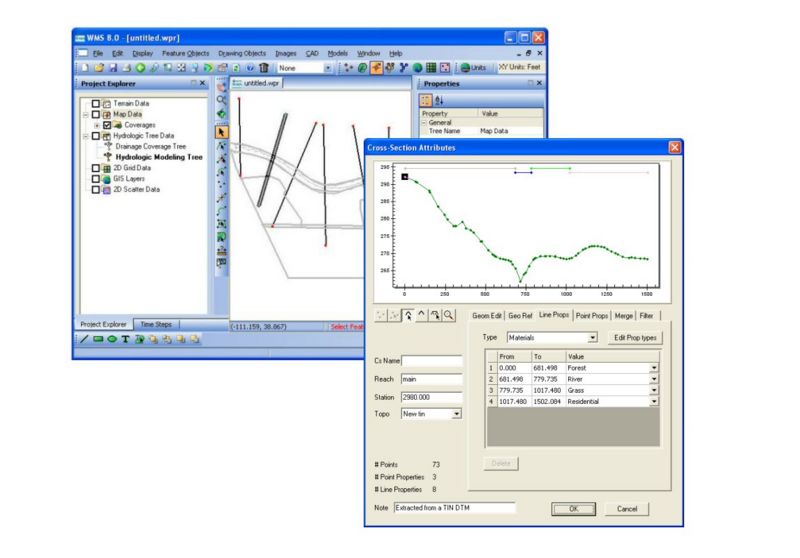WMS:Quick Tour -HEC-RAS: Difference between revisions
From XMS Wiki
Jump to navigationJump to search
No edit summary |
No edit summary |
||
| (3 intermediate revisions by the same user not shown) | |||
| Line 3: | Line 3: | ||
Then, using the water surface elevations computed by HEC-RAS, WMS can delineate a floodplain based on ground elevations contained in a TIN. | Then, using the water surface elevations computed by HEC-RAS, WMS can delineate a floodplain based on ground elevations contained in a TIN. | ||
[[Image:test2.jpg]] | [[Image:test2.jpg|800 px]] | ||
[[WMS:Quick Tour -Maricopa County Hydrology in WMS| '''< Previous''']] | [[WMS:Quick Tour -Storm Drain| ''' Next >''']] | [[WMS:Quick Tour -Maricopa County Hydrology in WMS| '''< Previous''']] | [[WMS:Quick Tour -Storm Drain| ''' Next >''']] | ||
[[Category:WMS Quick Tour| | |||
{{WMSQuick}} | |||
[[Category:WMS Quick Tour|HEC-RAS]] | |||
[[Category:HEC-RAS]] | |||
Latest revision as of 16:03, 11 April 2017
The 1D Hydraulic tools in WMS can be used to set up a HEC-RAS GIS Import file. Using feature arcs and polygons, users create a River schematic that consists of a river centerline, which includes data for cross-sections, river reaches, and Manning's roughness coefficients.
Then, using the water surface elevations computed by HEC-RAS, WMS can delineate a floodplain based on ground elevations contained in a TIN.

